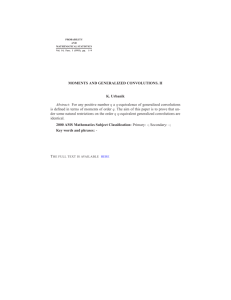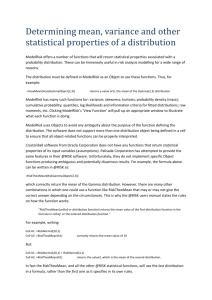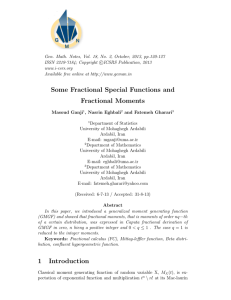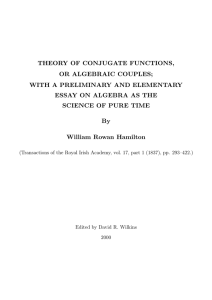Abstract - itü | fizik mühendisliği
advertisement
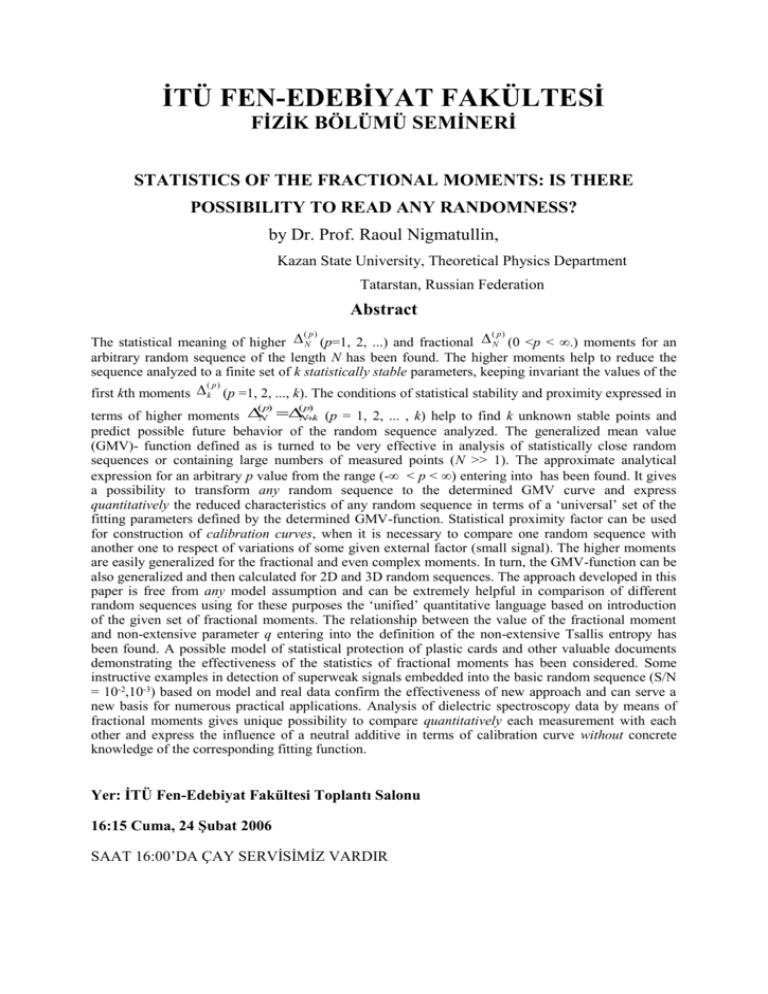
İTÜ FEN-EDEBİYAT FAKÜLTESİ FİZİK BÖLÜMÜ SEMİNERİ STATISTICS OF THE FRACTIONAL MOMENTS: IS THERE POSSIBILITY TO READ ANY RANDOMNESS? by Dr. Prof. Raoul Nigmatullin, Kazan State University, Theoretical Physics Department Tatarstan, Russian Federation Abstract The statistical meaning of higher N (p=1, 2, ...) and fractional N (0 <p < .) moments for an arbitrary random sequence of the length N has been found. The higher moments help to reduce the sequence analyzed to a finite set of k statistically stable parameters, keeping invariant the values of the ( p) ( p) ( p) first kth moments k (p =1, 2, ..., k). The conditions of statistical stability and proximity expressed in terms of higher moments N Nk (p = 1, 2, ... , k) help to find k unknown stable points and predict possible future behavior of the random sequence analyzed. The generalized mean value (GMV)- function defined as is turned to be very effective in analysis of statistically close random sequences or containing large numbers of measured points (N >> 1). The approximate analytical expression for an arbitrary p value from the range (- < p < ) entering into has been found. It gives a possibility to transform any random sequence to the determined GMV curve and express quantitatively the reduced characteristics of any random sequence in terms of a ‘universal’ set of the fitting parameters defined by the determined GMV-function. Statistical proximity factor can be used for construction of calibration curves, when it is necessary to compare one random sequence with another one to respect of variations of some given external factor (small signal). The higher moments are easily generalized for the fractional and even complex moments. In turn, the GMV-function can be also generalized and then calculated for 2D and 3D random sequences. The approach developed in this paper is free from any model assumption and can be extremely helpful in comparison of different random sequences using for these purposes the ‘unified’ quantitative language based on introduction of the given set of fractional moments. The relationship between the value of the fractional moment and non-extensive parameter q entering into the definition of the non-extensive Tsallis entropy has been found. A possible model of statistical protection of plastic cards and other valuable documents demonstrating the effectiveness of the statistics of fractional moments has been considered. Some instructive examples in detection of superweak signals embedded into the basic random sequence (S/N = 10-2,10-3) based on model and real data confirm the effectiveness of new approach and can serve a new basis for numerous practical applications. Analysis of dielectric spectroscopy data by means of fractional moments gives unique possibility to compare quantitatively each measurement with each other and express the influence of a neutral additive in terms of calibration curve without concrete knowledge of the corresponding fitting function. ( p) ( p) Yer: İTÜ Fen-Edebiyat Fakültesi Toplantı Salonu 16:15 Cuma, 24 Şubat 2006 SAAT 16:00’DA ÇAY SERVİSİMİZ VARDIR




